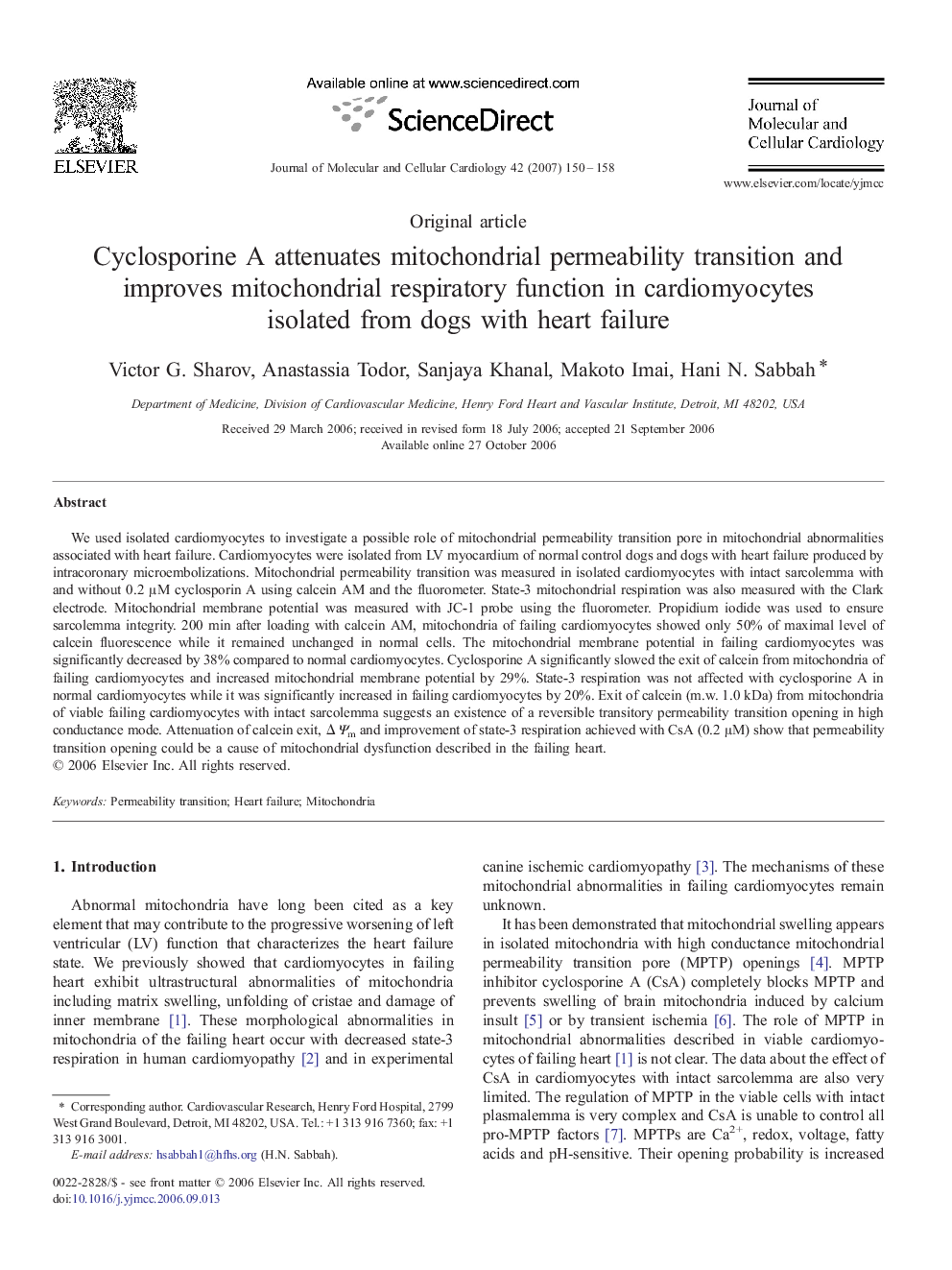| Article ID | Journal | Published Year | Pages | File Type |
|---|---|---|---|---|
| 10954277 | Journal of Molecular and Cellular Cardiology | 2007 | 9 Pages |
Abstract
We used isolated cardiomyocytes to investigate a possible role of mitochondrial permeability transition pore in mitochondrial abnormalities associated with heart failure. Cardiomyocytes were isolated from LV myocardium of normal control dogs and dogs with heart failure produced by intracoronary microembolizations. Mitochondrial permeability transition was measured in isolated cardiomyocytes with intact sarcolemma with and without 0.2 μM cyclosporin A using calcein AM and the fluorometer. State-3 mitochondrial respiration was also measured with the Clark electrode. Mitochondrial membrane potential was measured with JC-1 probe using the fluorometer. Propidium iodide was used to ensure sarcolemma integrity. 200 min after loading with calcein AM, mitochondria of failing cardiomyocytes showed only 50% of maximal level of calcein fluorescence while it remained unchanged in normal cells. The mitochondrial membrane potential in failing cardiomyocytes was significantly decreased by 38% compared to normal cardiomyocytes. Cyclosporine A significantly slowed the exit of calcein from mitochondria of failing cardiomyocytes and increased mitochondrial membrane potential by 29%. State-3 respiration was not affected with cyclosporine A in normal cardiomyocytes while it was significantly increased in failing cardiomyocytes by 20%. Exit of calcein (m.w. 1.0 kDa) from mitochondria of viable failing cardiomyocytes with intact sarcolemma suggests an existence of a reversible transitory permeability transition opening in high conductance mode. Attenuation of calcein exit, ÎΨm and improvement of state-3 respiration achieved with CsA (0.2 μM) show that permeability transition opening could be a cause of mitochondrial dysfunction described in the failing heart.
Related Topics
Life Sciences
Biochemistry, Genetics and Molecular Biology
Cell Biology
Authors
Victor G. Sharov, Anastassia Todor, Sanjaya Khanal, Makoto Imai, Hani N. Sabbah,
